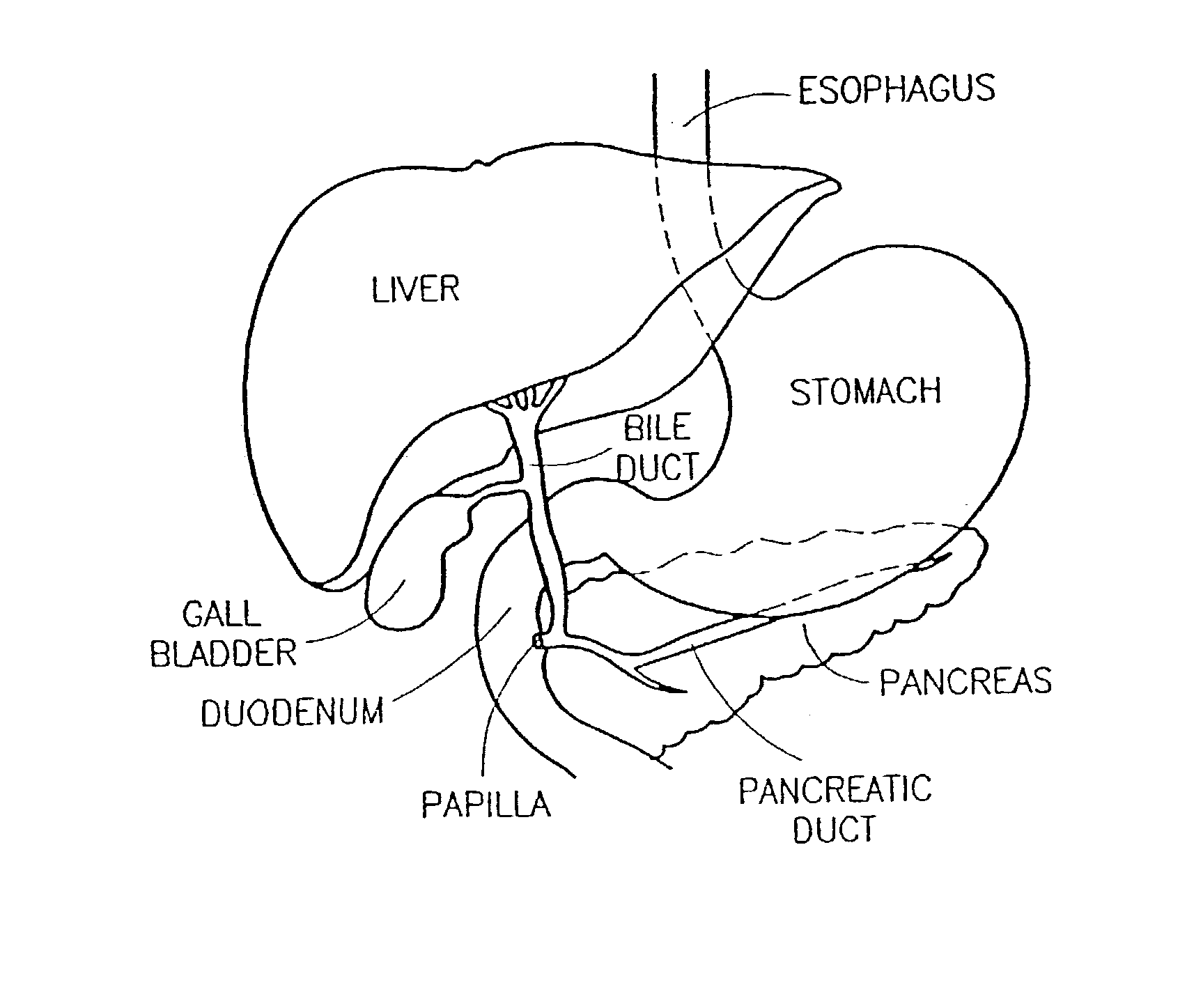Endoscopic tutorial system for the pancreatic system
a tutorial system and pancreatic system technology, applied in the field of medical procedures, can solve the problems of inability to accurately simulate the duodenoscope, the difficulty of hand-eye coordination and correct manipulation of the duodenoscope, and the difficulty of duodenoscope manipulation. accurate simulation and rapid rendering of visual data
- Summary
- Abstract
- Description
- Claims
- Application Information
AI Technical Summary
Benefits of technology
Problems solved by technology
Method used
Image
Examples
Embodiment Construction
[0045]The present invention is related to a method and a system to simulate the procedure of bilio-pancreatic duodenoscopy. The system is designed to simulate the actual medical procedure of bilio-pancreatic duodenoscopy as closely as possible by providing both a simulated medical instrument, and tactile and visual feedback as the simulated procedure is performed on the simulated patient. The present invention preferably includes a method for modeling the complex, branched anatomical structure of the bilio-pancreatic organ system according to a mathematical model. This anatomical structure has three different paths, which are preferably incorporated into the mathematical model: the duodenum and other portions of the gastro-intestinal tract; the bile duct and gallbladder; and the pancreatic duct and pancreas.
[0046]A particularly preferred feature of the present invention is the simulation of the procedure of dynamic contrast injection of dye into the papilla for fluoroscopy. The inje...
PUM
 Login to View More
Login to View More Abstract
Description
Claims
Application Information
 Login to View More
Login to View More - R&D
- Intellectual Property
- Life Sciences
- Materials
- Tech Scout
- Unparalleled Data Quality
- Higher Quality Content
- 60% Fewer Hallucinations
Browse by: Latest US Patents, China's latest patents, Technical Efficacy Thesaurus, Application Domain, Technology Topic, Popular Technical Reports.
© 2025 PatSnap. All rights reserved.Legal|Privacy policy|Modern Slavery Act Transparency Statement|Sitemap|About US| Contact US: help@patsnap.com



